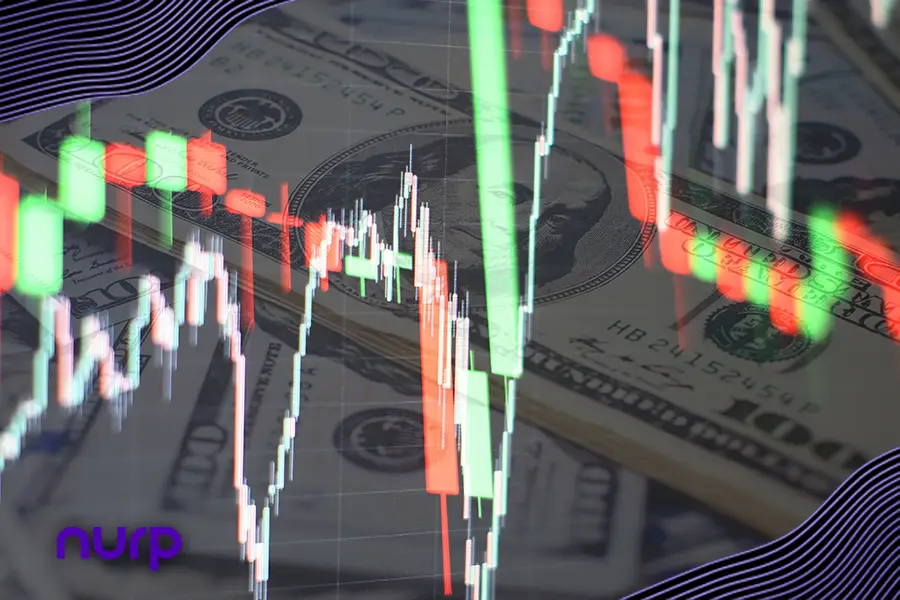Key takeaways:
Technological advancements, including machine learning, have enhanced statistical arbitrage strategies.
Statistical arbitrage involves capitalizing on minor pricing differences using statistical analysis and computer algorithms.
Regulatory bodies have introduced guidelines and oversight measures for algorithmic trading to mitigate risks.
The future of statistical arbitrage lies in integrating alternative data sources and emerging technologies like quantum computing.
Skilled practitioners who combine technology and expertise can benefit from the efficiency of statistical arbitrage.
Statistical arbitrage may not be a term you are familiar with, but it is a fascinating concept in the finance world. This strategy involves pinpointing and capitalizing on minor pricing differences in financial markets to yield profits.
Consider this scenario: You stumble upon a grocery store selling a box of cereal for $1 while all other stores sell it for $4. You can effortlessly profit by purchasing the underpriced cereal and reselling it elsewhere. This is the essence of arbitrage – exploiting price variations.
In the world of finance, pricing imbalances are typically minimal and short-lived. They may only persist for fractions of a second before being rectified. This is where statistical analysis and computer algorithms play a crucial role in swiftly identifying these fleeting opportunities.
A Short History
Statistical arbitrage strategies have existed for many years but gained momentum in the 1990s and 2000s with the rapid advancement of computing power. Math experts and financial analysts on Wall Street began creating intricate models to detect and capitalize on minute pricing differences across various markets.
These strategies involve monitoring the historical prices and correlations between different securities, such as stocks, bonds, and currencies. If these correlations deviate slightly from their usual patterns based on the analysis models, it could indicate profitable mispricing to exploit.
How Statistical Arbitrage Works
Statistical arbitrage utilizes advanced data analysis, quantitative models, and high-speed trading systems to identify and capitalize on minor pricing discrepancies before they disappear.
The methods employed can become intricate, but a straightforward illustration is the “pairs trading” strategy: Suppose two stocks, A and B, have historically moved in close correlation. If stock A suddenly deviates from its usual range compared to B based on past data, it might indicate a short-term opportunity for mispricing.
Traders can then short-sell the overpriced stock while buying the underpriced one, profiting from the difference when the prices eventually revert to their typical relationship as predicted by the model.
In reality, developing effective trading models involves analyzing vast datasets across multiple securities and markets while considering factors like volatility, market conditions, breaking news, etc. Continuous effort is required to interpret ever-changing data and enhance the algorithms that guide the strategies.
Technology Plays a Crucial Role
Modern statistical arbitrage heavily relies on computers and programming. Detecting and acting on fleeting pricing imbalances demands rapid data analysis, efficient trade execution systems, and seamless market connections. In this realm, split seconds matter significantly!
In the era of algorithmic trading inundated with data, major financial institutions invest substantial resources in crafting sophisticated models, acquiring state-of-the-art technology, and upholding swift data links to global markets.
For example, they might utilize machine learning algorithms to sift through extensive data—spanning news articles, social media mentions, and SEC filings—seeking any cues that could lead to temporary pricing anomalies to exploit.
What are the Risks and Challenges?
It’s a fiercely competitive technological race where speed and modeling expertise can translate into steady profits. With sufficient technological firepower, even minor pricing advantages can be attainable.
Navigating the world of statistical arbitrage can be rewarding, but it comes with its fair share of challenges. It is crucial to constantly update and improve the models to adapt to changing market conditions. Relying too heavily on historical data can backfire if the fu landscape is drastically different.
Moreover, there is a danger of falling into “value traps” where apparent pricing anomalies indicate new market fundamentals rather than short-term discrepancies.
Factors such as trading expenses and market fluctuations can rapidly diminish profits. Technical glitches or errors in programming during intense trading situations can have catastrophic consequences. Therefore, effective risk management is essential.
While statistical arbitrage strategies offer advantages, they also present unique risks and challenges that traders must consider:
Model Risk: The accuracy of statistical arbitrage models heavily depends on the data and assumptions used. Flaws in data inputs or modeling methods can result in poor trading signals and losses. Continuous review and recalibration of models are essential as market conditions change.
Execution Risk: Statistical arbitrage involves executing numerous trades quickly across various securities to exploit minor pricing differences. Suboptimal order execution can lead to slippage, eroding potential profits.
Overcrowding Risk: With more firms using similar statistical arbitrage models, opportunities can become saturated and less profitable. Finding new, uncorrelated strategies is critical to maintaining a competitive edge.
Market Risk: Although statistical arbitrage aims to be market-neutral by balancing long and short positions, it is not immune to broader market risks such as volatility shocks, liquidity issues, or unexpected events that can disrupt pricing relationships.
Technological Risks: The time-sensitive nature of statistical arbitrage trading makes it vulnerable to technological failures, such as system glitches, data feed problems, or connectivity issues, which can negatively impact performance.
Regulatory Risks: With algorithms playing a significant role in statistical arbitrage, regulators may introduce new rules regarding market manipulation, fair access, transparency, and investor protection.
Is Algorithmic Trading Better Than Statistical Arbitrage?
Statistical arbitrage has become even more intricate with the integration of algorithmic trading, a rapidly evolving field.
While traditional statistical arbitrage models focus on identifying mispricing opportunities, algorithmic trading systems go a step further by determining the best timing, order placement, execution strategies, and portfolio management to capture these imbalances and source liquidity efficiently.
For example, algorithms can strategically execute large orders across multiple trading venues to minimize market impact and adverse price movements. They can also react instantaneously to breaking news by recalculating fair values and repositioning across various securities simultaneously.
In the competitive landscape of statistical arbitrage, algorithms have emerged as a powerful tool for finance firms seeking to gain an edge in trading. They contribute to market depth, facilitate more effective price discovery, and enable trades to be executed in increasingly fragmented liquidity environments.
Nevertheless, the proliferation of algorithms has brought about new risks, including heightened market interconnectivity, sub-second feedback loops, and the potential for disruptive ‘flash crashes’ in specific scenarios. Therefore, implementing robust controls and safeguards is essential.
Regulatory bodies have introduced stringent guidelines and oversight measures for algorithmic trading to mitigate these risks. Firms have comprehensive risk management frameworks to prevent excessive volatility, including pre-trade risk checks, post-trade analysis, and circuit breakers.
Additionally, there is a growing emphasis on transparency and accountability in algorithmic trading. Market participants must disclose their trading strategies and report their algorithmic activities regularly. This helps regulators monitor market behavior and identify any potential misconduct or manipulation.
Furthermore, technological advancements and data analysis have enabled the development of sophisticated algorithms that can adapt to changing market conditions and learn from past trading patterns. Machine learning and artificial intelligence techniques are now employed to enhance algorithmic trading strategies, enabling algorithms to continuously evolve and improve their performance.
Looking ahead, algorithmic trading is poised to continue its upward trajectory. As technology advances and investors seek more efficient trade methods, algorithms will play an increasingly vital role in financial markets. However, striking the right balance between innovation and risk management will be crucial to ensure the stability and integrity of the global economic system.
The Future Looks Bright
In the future, we anticipate integrating alternative data sources such as satellite imagery, social media signals, and IoT sensors, along with the emergence of quantum computing, which will provide new opportunities for gaining trading advantages. Machine learning and AI can uncover complex relationships that may elude human analysis.
Skilled practitioners who harness technology to exploit inefficiencies in global markets stand to reap substantial rewards. However, the increasing complexity also brings about more significant risks that require advanced expertise.
In summary, statistical arbitrage, driven by innovative quantitative strategies and state-of-the-art algorithms, is firmly established in the fiercely competitive realm of finance. The hidden catalyst propels markets forward, transforming them into highly efficient money-making machines.
Conclusion
Statistical arbitrage practitioners must develop robust risk management frameworks to navigate the associated risks effectively. This involves implementing rigorous model validation processes, pre-trade risk controls, real-time monitoring, kill switches, diversification across strategies and markets, and strict capital and drawdown limits.
Practitioners must stay updated on technological advancements and computational techniques to maintain a competitive advantage. Areas such as machine learning, natural language processing, and alternative data sources can uncover new statistical arbitrage opportunities.
Furthermore, fostering the right culture and talent within the teams is essential. Team members must possess diverse skills, including mathematics, computer science, trading, and risk management, to drive innovation while maintaining prudent oversight.
Lastly, having an optimal institutional setup with access to low-cost financing, efficient infrastructure, and substantial capital reserves is critical for surviving periods of underperformance and achieving compounded returns over market cycles.
While statistical arbitrage is not a guaranteed solution, it remains an attractive strategy for sophisticated investors who possess the necessary expertise, resources, and risk discipline to navigate its unique challenges and capitalize on persistent market inefficiencies at a large scale.
Want to Explore More?
If you want to learn more about how we’ve helped over 2,400 traders, investors, entrepreneurs, and high-income earners achieve optimum portfolio performance while following closely the rules of statistical arbitrage, short application form to schedule a free, no-obligation call with our team.
The post Statistical Arbitrage and Why It’s Not For Everyone first appeared on Nurp.com.








